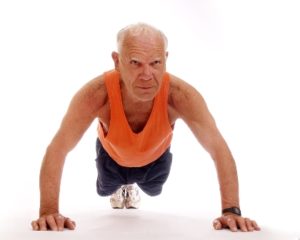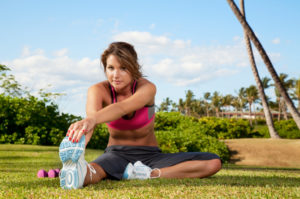When you hear the description of cold thermogenesis it just sounds like torture! So what is it and more importantly does it work?
Cold thermogenesis is the immersion of your body or body parts in a cold environment, usually in water, often known as ice baths.
There are numerous different protocols, some involve wearing special clothing, while with others you simply jump in a cold river or ocean.
The benefits of the practice include increased fat burning, better sleep quality, improved hormonal status and increased immune system function.
So how does it work? Well firstly it increases your amount of Brown Adipose Tissue (BAT). Brown fat (BAT)is coloured the way it it due to its high number of mitochondria and it is very good at burning normal fat stores for energy and this is increased when exposed to cold. Your muscles also produce heat when you’re cold and this is reflected in the shivering response that is commonly seen when we are cold. Both of these mechanisms increase the number of calories burned and can help raise your metabolism and also with weight loss.
Studies have shown that through exposure to cold, your body produces more adinopectin which is a hormone that that when low is associated with diabetes, heart disease and obesity. So it is beneficial to keep levels of this hormone up. Other studies have shown that glucose uptake increased 12 fold when exposed to cold temperatures. This can help burn calories but it also helps control blood sugar and insulin levels. Cold exposure increases another hormone in the body – norepinephrine.
This is a stress hormone (most of us get stressed when we’re dunked in freezing cold water) that is associated with improved mood and also it is anti inflammatory. It vasoconstricts your blood vessels when exposed to cold which strengthens the smooth muscles and this can improve the ability of your circulatory system. It increases mitochondrial biogenesis which as we’ve looked at, boosts your metabolism.
Cols Shock Proteins are also produced during cold thermogenesis. This can cause massive regeneration of your cells particularly the neurons in your brain, which can also cause a hugeboost in how you feel along with slowing down the process of neurological decline.
 In a similar way to intermittent fasting, cold thermogenesis, helps activate mTor genetic pathway which is key to longevity. Inhibition of this pathway can cause cell autophagy (programmed death) which can help the body rid itself of dead cells and debris which all aid in longer life.
In a similar way to intermittent fasting, cold thermogenesis, helps activate mTor genetic pathway which is key to longevity. Inhibition of this pathway can cause cell autophagy (programmed death) which can help the body rid itself of dead cells and debris which all aid in longer life.
The immune system is another part of the body which benefits from cold thermogenesis. Exposure to cold has been shown to improve Natural Killer (NK) cells along with other white blood cells to heighten immune response. There is anecdotal evidence that shows that “Winter Swimmers” never get sick or show symptoms of cold and flu.
Cold therapy also increases the body’s natural production of antioxidants particularly glutathione reductase and superoxide dismutase which are powerful weapons in the fight against free radicals which can damage your cells. These naturally made antioxidants are way more powerful than antioxidant pills you can take.

 Mitochondrial health has been implicated in many degenerative diseases such as cancer, diabetes and heart disease. In fact esteemed natural health physician, Dr Joseph Mercola writes on his blog:
Mitochondrial health has been implicated in many degenerative diseases such as cancer, diabetes and heart disease. In fact esteemed natural health physician, Dr Joseph Mercola writes on his blog: Numerous studies have shown how shortened telomeres have been linked with accelerated cellular aging. In fact, one study from Belgium showed that moderate intensity physical exercsie (45 mins on a stationery bike) was enough to increase the levels of a molecule (
Numerous studies have shown how shortened telomeres have been linked with accelerated cellular aging. In fact, one study from Belgium showed that moderate intensity physical exercsie (45 mins on a stationery bike) was enough to increase the levels of a molecule ( Aside from sports, static stretching can also be used to help improve your posture and relieve back and neck pain. As a society we spend most of our day seated at a desk or in front of a screen of some sort. This leads to a forward head posture with very rounded shoulders. Not only does this not look particularly attractive it can be one of the main contributors of both low back pain and neck pain. By merely stretching the muscles that become shortened and tightened in this position, namely your pecs and sternocleidomastoid (neck) muscles, you’ll help reverse the poor posture and relieve any aches and pains that result from it.
Aside from sports, static stretching can also be used to help improve your posture and relieve back and neck pain. As a society we spend most of our day seated at a desk or in front of a screen of some sort. This leads to a forward head posture with very rounded shoulders. Not only does this not look particularly attractive it can be one of the main contributors of both low back pain and neck pain. By merely stretching the muscles that become shortened and tightened in this position, namely your pecs and sternocleidomastoid (neck) muscles, you’ll help reverse the poor posture and relieve any aches and pains that result from it. Many people love to run but find it very laborious. Unless I have a specific goal in mind like training for an upcoming football season or looking forward to a trekking holiday in the Himalayas I find it very hard to motivate myself to just go out for a run.
Many people love to run but find it very laborious. Unless I have a specific goal in mind like training for an upcoming football season or looking forward to a trekking holiday in the Himalayas I find it very hard to motivate myself to just go out for a run.